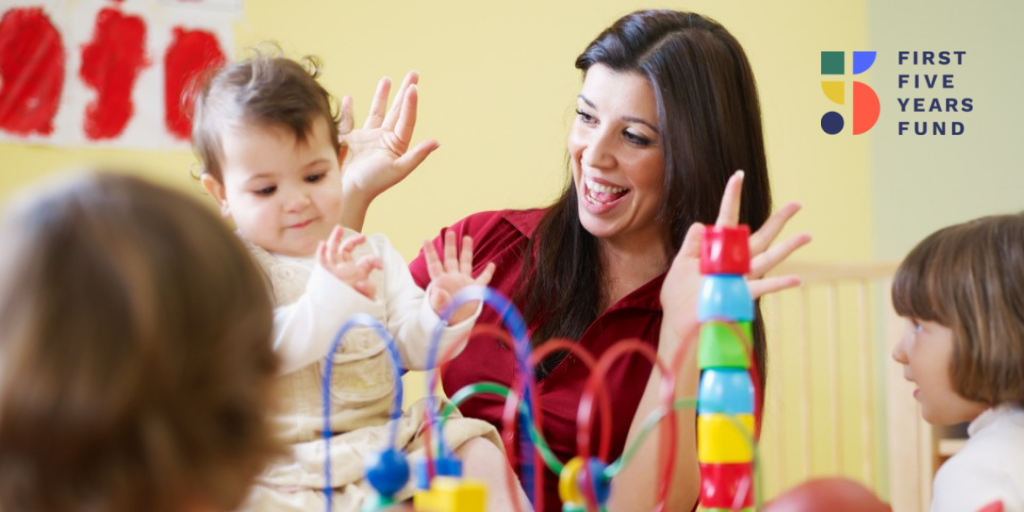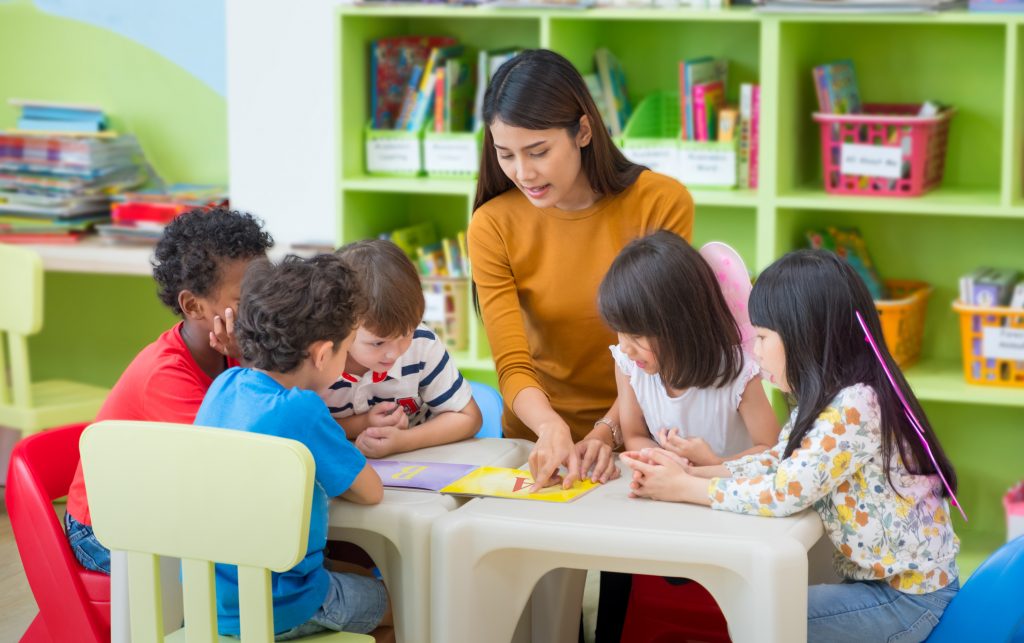How States Are Using PDG B-5 Grants to Support Multilingual Learners

The BUILD Initiative, ZERO TO THREE, and Start Early, recently released a new brief highlighting the strategies states are using to support multilingual learners in their Preschool Development Grant Birth through Five (PDG B-5) applications. This brief highlights how PDG B-5 is being used to build the capacity of early care and education (ECE) systems, create infrastructure, provide direct services, and pilot new work in order to support multilingual learners. Their analysis found that states are employing different pilot programs and temporary strategies that are moving the needle in their states, but more federal funding is needed to ensure that they can see this work come to fruition and support young children and their families.
PDG B-5 is a competitive federal grant designed to improve states’ ECE systems. In 2023, 21 states were awarded Planning Grants, and 21 states were awarded Renewal Grants. While the scope of work for planning grantees is to conduct comprehensive needs assessments and draft strategic plans, the renewal grantees focus on implementing their strategic plan. The 21 renewal grantees are using this infusion of federal funding across a wide range of content areas in their ECE systems, and in a variety of ways, such as by implementing compensation reforms, expanding professional development training, building the supply of child care, and streamlining administrative requirements.
In analyzing PDG B-5 grant applications, BUILD found that states have been charting their own course when it comes to ECE system development by working on a variety of projects and initiatives at once. They found that states tend to focus on shorter-term projects for their grants, perhaps because states do not see PDG B-5 as a reliable, continuous funding stream and lack confidence that state funding would be available to sustain the work. States may also be focusing on producing near-term results, or the broad framework of the grant may have led to more responsive strategies.
Multilingual learners, or children who speak language(s) other than English, bring a rich tapestry of languages and cultures to early childhood classrooms. Approximately half of children birth to age two are multilingual, and 17% of children ages three, four, and five, are multilingual. Multilingual learners have many racial, ethnic, cultural, and linguistic assets, however, they face unique challenges in the education system that must be acknowledged and addressed to ensure their success. It is imperative that states provide a robust array of resources and supports to support multilingual learners effectively. This includes high-quality professional development for educators that encompasses strategies for culturally responsive teaching, language development, and effective communication with families who speak languages other than English. Additionally, instructional materials and curriculum resources that embrace linguistic and cultural diversity are crucial.
Multilingual learners have been identified as a vulnerable or underserved population in 27 of the 40 PDG B-5 applications that mention multilingual children. PDG B-5 funding allows states to support multilingual learners, and grantees are doing so through a variety of avenues such as engaging families as experts in their child’s language and culture, and promoting the needs of multilingual children and their families in local, state, and federal programs and policies, among others.
According to BUILD’s analysis, PDG B-5 plans were most likely to support multilingual learners across seven strategies:
- Making resources available in other languages,
- Assuring they are culturally appropriate,
- Providing training and technical assistance on language development for practitioners,
- Providing degrees and credentials to support a multilingual workforce,
- Recruiting and retaining a multilingual workforce,
- Developing a common process to identify multilingual learners, and
- Supporting tribal language immersion and community engagement
PDG B-5 grants provide an opportunity for states to create supportive, targeted strategies. Click here to read more about all of the strategies states are pursuing and read on to see a few examples directly from BUILD of how states use PDG B-5 grant funds to support multilingual learners.
Translation of Resources
Translating resources is the most common activity in the PDG B-5 applications.
- 28 of the 42 states plan to use PDG funding to translate resources for families and/or practitioners.
- 15 states will review and revise resources to ensure they are culturally appropriate.
Training to Support Language Development
15 states plan to use PDG B-5 funding to create, expand, and/or enhance existing professional development supporting multilingual learners’ language development.
- Topics range from administering a culturally appropriate developmental screener, to including multilingual children in curriculum development, to ensuring teacher practices are culturally competent, among others.
Workforce Degrees and Credentials
Delaware, Massachusetts, and South Carolina will offer credentials, badges, or degrees to support multilingual learners.
- Although Delaware does not offer a specific credential or badge to support multilingual children, this state will offer support cohorts in multiple languages for CDA attainment and Associate’s and Bachelor’s degree completion. This state will also require higher education partners to teach coursework in Spanish and Haitian Creole.
Multilingual Workforce Recruitment and Retention
Idaho, Illinois, Mississippi, Ohio, and Virginia plan to use PDG B-5 funding to recruit and retain multilingual child care providers and lead or assistant teachers.
- Mississippi plans to provide bonuses for programs that employ a lead or assistant teacher who is fluent in a child’s home language. Child care providers serving families who do not speak English will receive a monthly subsidy bonus for employing a lead or assistant teacher who is fluent in a child’s home language.
Process to Identify Multilingual Learners
- Illinois will implement a common identification process across the mixed delivery system leading to the full integration of multilingual learners into the ECE system. The process will include a home language survey and screener along with professional development for staff.
Tribal Language and Community Engagement
- New Mexico will partner with the Jemez Pueblo and the University of Hawaii at Hilo to advance language immersion programs in tribal communities across the state.
While PDG is providing crucial support for multilingual learners, there is more work ahead. Many states’ needs assessments identified obtaining data on multilingual children, ages 0-5, as a significant gap. Most states do not collect or analyze data on young multilingual children, resulting in inadequate and often inaccurate information used by program and policy leaders. Additionally, research highlights the individual needs of multilingual children and their families, yet only 15 of the 27 states that include multilingual learners as a vulnerable population in their application, identified specific activities to support families and/or practitioners of multilingual learners.
Many activities related to supporting multilingual children, their families, and ECE professionals in PDG B-5 applications are one-time activities, such as translating resources for families and practitioners. Ongoing funding is needed to develop a sustainable support structure that embeds racial, ethnic, cultural, and linguistic diversity at the core of developmentally appropriate practices.
Throughout 2023, BUILD will continue to produce briefs highlighting how states are using PDG B-5 renewal grants, focusing on the following strategies: Workforce Compensation, Career Pathways, Mixed Delivery Systems, and Financing.
This is part of a larger blog series, find the rest of our PDG series here.
Subscribe to FFYF First Look
Every morning, FFYF reports on the latest child care & early learning news from across the country. Subscribe and take 5 minutes to know what's happening in early childhood education.


